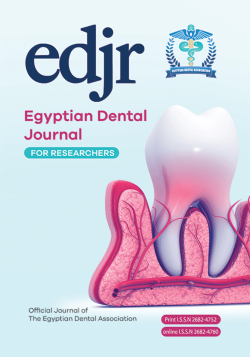Islam M. Heiba , Marwa E. Sabet And Ahmed M. Osama,
ABSTRACT
Purpose: The Purpose Of This Study Was To Evaluate Which Treatment Modality Is Better Regarding The Amount Of Forces Transmitted To The Implant And Posterior Side Of The Ridge During Vertical And Oblique Loading Either Making:-Biohpp Bar-retained Implant-supported Overdenture Or -Biohpp Implant-retained Fixed Bridge.
Materials and Methods: Two Experimental Mandibular Prosthesis Supported By Dental Implants Were Constructed For This Study On Acrylic Model. The First Design Consisted Of Mandibular Overdentures Supported By CAD CAM BioHPP Milled Interconnecting Bar With Resilient Bar/clip Attachment. The Second Design Consisted Of BioHPP Implant Supported Fixed Bridge. The Implant Bridge Was Milled Using CAD CAM Technology In Cut Pack Design Framework And Was Veneered With Special Material. Acrylic Experimental Mandibular Model With Four Implants Was Used For This Study. This Model Replicates The Anatomic Features Of The Lower Edentulous Jaw And The Mucosa Covering The Ridge. Four Channel Strain Meter Was Used To Asses And Record The Strains Induced To The Distal Abutments And Residual Ridge. The Two Experimental Designs Were Submitted To Unilateral Vertical And Oblique Load; Then Evaluated For Stress Analysis Using Strain Guage Analysis. ANOVA And Student T-test Were Used To Analyze The Data.
Results: One-Way ANOVA Revealed That There Was A Significant Difference In Strain Values Between Unilateral Vertical And Oblique Load Applications. The Greatest Strain Values Were Recorded At Loading Side Of Implants During Unilateral Load Application, While The Lowest Values Were Recorded At The Non Loading Side.
Conclusion: Selection Of The Design Whether Bar Attachment Or Fixed Bridge Depends Upon The Health Remaining Residual Ridge As: Fixed Bridge Decrease The Load On The Loaded Ridge And Increase The Stress On The Loaded Implants While Bar Attachment Decrease The Load On The Loaded Implants And This Was On Favor To The Health Of The Ridge.


